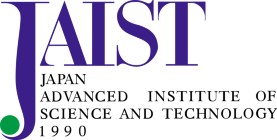
High-throughput experimentation has been applied to the oxidative coupling of methane.© peterschreiber.media/iStock/Getty Images Plus
Catalysts can help tackle some of the world’s most pressing problems, according to Toshiaki Taniike, a professor in materials chemistry at the Japan Advanced Institute of Science and Technology (JAIST). For example, they can break down plastic waste, cut the carbon footprint of fertilizer production, and capture and use carbon dioxide generated by industrial processes.
But Taniike, the director of JAIST’s International Excellent Core for Materials Informatics, knows that discovering those catalysts among the myriad of combinations of elements is tougher than finding the proverbial needle in a haystack. To tackle this challenge, his team has implemented an approach that combines two cutting-edge technologies: high-throughput experimentation and artificial intelligence.
The result, Taniike says, is revolutionary. “Previously, chemists studied these super-difficult reactions for years and made little progress. By harnessing high-throughput experimentation and artificial intelligence, we can dramatically accelerate the search for these reactions.” He cites an example of an article about the collection of 2,000 data points from three decades of data in the literature on the oxidative coupling of methane. “Using high-throughput experimentation, we collected 4,000 data points in a day,” he says.
“In a recent study on catalysts, we considered 40,000 materials,” says Taniike. “And in another on polymer additives, the material space was 44 million.”
The 100-fold increase in the experimentation rate not only improves the volume of data collected but also its consistency, which is crucial for successful machine learning. “Catalysts work as a part of the process, but each lab has their own specific interests and processes. So datasets in the literature are often incompatible.” Instead Taniike’s team uses automation technology to build their own datasets, that are consistent and sample the huge parameter space evenly.
The team whittles down possibilities using a machine learning algorithm to recommend potential catalysts — a markedly different method to traditional approaches of trial and error or serendipity.

Toshiaki Taniike (far left) and his team are fast tracking the search for new catalysts by using high-throughput experimentation and artificial intelligence.© Japan Advanced Institute of Science and Technology
The results have been startling: in a study of oxidative coupling of methane their selections from 36,000 possible catalysts yielded 50 that performed better than no catalyst, some from surprising combinations.
For Taniike, it’s the realization of a dream. “As a student, I dreamed we could control chemical reactions using computational predictions.” But he soon found quantum chemistry could only model simple reactions, and anything involving a catalyst was a complicated tangle of intermediate states and surface properties that was far beyond the powers of theoretical chemistry. He hopes that the catalysts revealed by his studies will boost understanding of the fundamental processes at work.
“We can go deep into the mechanism of catalysis. We’re hoping to uncover new science.”



 Nature Index 2021 Materials Science
Nature Index 2021 Materials Science